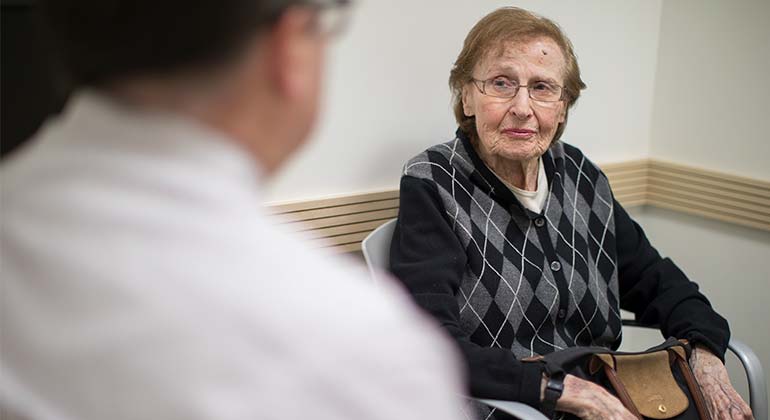Preventive Care Means Suicide Prevention
September is National Suicide Prevention Month — Your Action Plan Starts Here
For many patients, a visit with their primary care physician is a chance to access needed medical care and is an ideal setting for suicide prevention. By knowing the warning signs and risk factors for suicide, you can help prevent suicide attempts and address risk factors early on. Here’s how you can integrate suicide prevention in your practice and with your patients.
Provider's Guide to Suicide Risk Assessment
Contrary to a commonly held myth, asking patients about whether they experience thoughts of suicide does not put the thought in their mind. In fact, it typically opens the door for the patient to share their thoughts, and lets them know that you are open to listening and supporting them. This guide offers you strategies to assess and treat patients at risk for suicidality to determine the nature of the risk and plan for the patient’s safety.
Multimedia
Screen for Common Risk Factors
Health factors such as:
Depression
Anxiety
Substance use
Bipolar disorder
Schizophrenia
Poor relationships
Conduct disorder
Physical pain
Traumatic brain injury
Environmental stressors such as:
Harassment/bullying
Relational issues
Job loss/unemployment
Divorce
Death of a loved one
Exposure to another person’s suicide
Prior history of suicide attempts
Family history of suicide
Chronic abuse
Learn more about risk factors launch
Know the Warning Signs
Expressing thoughts about:
Killing oneself
Having no reason to live
Feeling trapped and/or hopeless
Feeling like a burden to others
Troubling behaviors such as:
Increased substance use
Isolation
Looking for a means to kill oneself
Giving away possessions
Changes to sleep and eating
Increased aggression or fatigue
Changes in mood including:
Increased depression, anxiety, shame, irritability, aggression
Sudden improvement of symptoms
Learn more about risk factors launch
Debunk Myths about Suicide Prevention
Asking someone if they are having thoughts of suicide does not put the thought in the patient’s mind – it opens the door for the patient to speak without judgment.
Suicide is not just an issue that affects individuals with a mental health condition – having a plan and process for screening patients for suicidality can save lives.
Most suicides are not sudden - verbal and/or behavioral warning signs often precede attempts. Warning signs may go unrecognized, however, making your role as a healthcare provider all the more important in delivering this preventive care.
Suicide is not inevitable and suicidal ideation is not permanent. The act of suicide is often an attempt to control deep, painful emotions and thoughts, and once these dissipate, so will the suicidal ideation. Patients with suicidal thoughts and attempts can still live a long, successful life. Intervention can be a lifeline.
Learn more about suicide myths launch
Plan with your Patients
Safety planning using the evidence-based Safety Planning Intervention can help you collaborate with your patient in a non-threatening way and a free app called My3 can help you and your patient create a safety plan. The intent of the plan is to lower patient’s suicide risk by having a predetermined set of potential coping strategies and contacts (individuals or agencies).
Establish means safety. Plan for time and space between the patient and her/his chosen means for suicide. For example, if the patient is planning to use a firearm, consider counseling them about utilizing lockboxes with the keys entrusted to a loved one for safe keeping, and/or keeping guns and ammunition separate.
Download the app launch
Refer Patients to Resources and Evidence-Based Treatment
24/7 Free and Confidential Hotlines
National Suicide Prevention Lifeline | 988 | Online chat
NYC Well | 1-888-692-9355 | Text WELL to 65173 | Online chat
Behavioral Health at Mount Sinai
212-659-8838 | More information for referring physicians
Mount Sinai Care Management
Assistance with finding services and insurance verification | 212-241-7228 | MSHPCMReferral@mountsinai.org
Find a Provider
Search by specialty, zip code, accepted insurance, or name | Provider Search
Printable Patient Handout
A printable one pager of resources and phone numbers to share with your patients
Follow Up
Through this simple action, we can let the patient know that we care about them, and that their life matters.
Learn more about follow-up care launch
Questions? Still unsure how to begin the conversation?
email Email Anitha Iyer, PhD, Director of Behavioral Health Population Management











